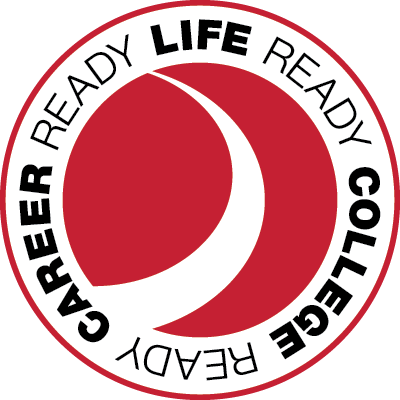Journalism Pathway teaches students value of communications
/Student journalists from across District 214 gained press credentials to cover a Chicago Bears practice in August 2017 at Prospect High School. The students interviewed Sherrick McManis of the Bears following the practice.
By Kayleigh Padar
Interviewing professional athletes, covering state championships and taking photos along the sidelines are only some of the experiences that helped John Hersey High School senior Caroline Stiefbold decide to major in journalism at the University of Missouri next year.
"Being a part of the journalism pathway … has definitely prepared me as I head off to college and take the next step in my journalism career," said Stiefbold, a senior who has worked on the John Hersey student newspaper, The Correspondent, for four years and is currently one of four editors-in-chief.
Buffalo Grove High School teacher and journalism adviser Stefanie McCLeish answers a question from sophomore Ginia Cottingham, a member of the student newspaper, The Charger.
To prepare students for careers in broadcasting, reporting and digital communications, High School District 214 offers classes in its Journalism and Broadcasting Career Pathway. The pathway supplements these courses with practical experience through student newspapers, websites, webcasts, podcasts, yearbooks and broadcasts, as well as internships.
For example, students interested in print, photo and digital journalism can work on student newspapers in all of the district's high schools, putting out a print newspaper as well as digital news through websites and live streams.
For those interested in broadcast journalism, some schools have a variety of options, such as Prospect High School's broadcasting of sports games with postgame interviews, along with weekly sports programs.
In addition, the district offers Studio 214, which gives students the opportunity to work with award-winning producers, directors and editors to produce a television show. This year, students are working on a program that follows the flip of a local house by fellow students from the district's Practical Architectural Construction program.
"In (Studio 214), students learn how to best communicate their messages. By understanding visual communication, students will be able to express their own point of view and to better understand the point of view of others," Studio 214 teacher Steven Apter said.
The key to the program is enabling students to learn journalism skills by using them, with the curriculum changing to keep up to date with new media technologies.
"Journalism is a class that is authentic education. We're not imagining scenarios. We are working as journalists, creating a real product," said Hersey journalism adviser Janet Levin, who has been teaching journalism for 37 years and has led The Correspondent for 33 years.
For their productions and in class, students are in charge of everything, from coming up with story ideas and doing research and interviews to creating the end product on deadline -- all skills that can be transferred to any career.
Wheeling High School senior Shailah Magallon (right) works alongside freshman Kamila Walus to help edit a story for the school's newspaper, The Spokesman.
"I initially enrolled in journalism because I like to write, but I never expected it to help me with more than just that," Wheeling High School senior Shailah Magallon said. "The way my journalism class is set up it gives you an insight of a 'real world' job because there are deadlines and people are relying on you."
"They're learning about communication in so many different forms -- storytelling, how to work as a team, how to sit down and interview another person and actually listen to what they have to say," said Prospect High School journalism adviser Jason Block, "They learn the importance of truth and fairness. They learn to make tough decisions about what is going to run in print or online, and (they learn) to question not if we can say something, but if we should say something."




